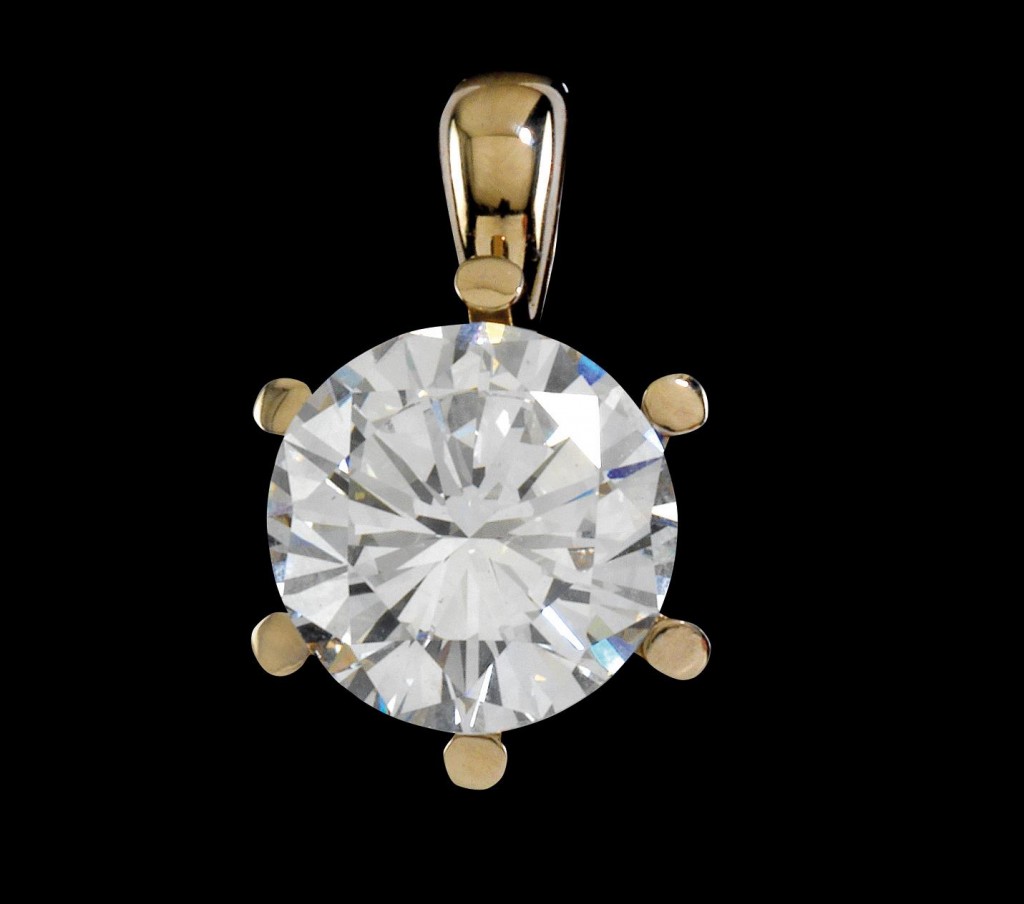In anticipation of Dorotheum’s jewellery auction in Vienna on the 21st of April, we take a look at that most precious of gemstones, the jewel which lasts “forever:” the diamond. To highlight the best pieces in our auction, we present our readers with a guide to assessing the quality of these brilliant stones alongside four examples from our very own showrooms. So for all those diamonds in the rough out there (and for all you flawless individuals too), here’s a little ready-cut refinement to dazzle your jewel-bedecked companions at any high-flying dinner or event: the 4 C’s of the diamond industry.
1. Carat
The first criterion of diamond quality assessment is how many carats a diamond has. The number of carats a diamond has corresponds with its weight, where 1 carat is equal to 0.2 grams. Generally speaking, the higher the carat-weight, the rarer the diamond and therefore the higher the value. The other 3 criteria of course have a bearing on this and two diamonds can be of the same weight but differ greatly in price due to (warning: spoilers for the other 3 C’s) varying colour, cut, and clarity. To demonstrate our first C, we give you one of our weightiest diamond rings, Lot 40, with the large diamond weighing 5.8 carats (each carat can be subdivided into 100 “points”). While carat weight is one of the easiest ways to initially value a diamond, it is important to bear in mind that a diamond’s value is determined using all 4 C’s, not the weight alone.
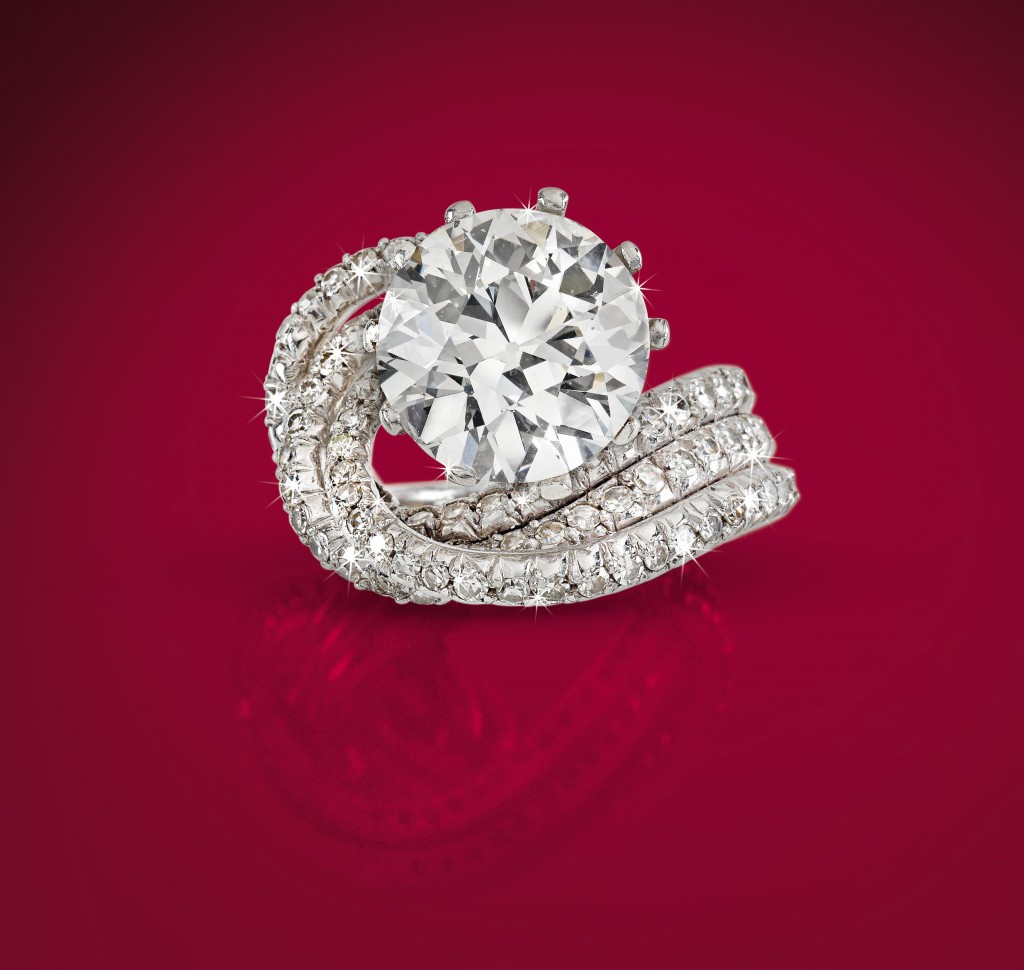
2. Cut
As well as perhaps being the trickiest C to explain, the “cut” of the diamond is the most technically difficult of the 4 C’s to assess. The cut of the diamond is often thought to refer to the shape alone i.e. round, pear, oval, but it is actually how well the facets have been cut to interact with the light i.e. through symmmetry, polish and proportions. The cut of the diamond is what produces the sparkle that makes the stone so precious; a poorly cut diamond means a less luminous and less “brilliant” diamond. The most common “cut” of diamond is the round brilliant cut but fancy cuts are also prevalent – despite the fact that they are detrimental to the stone’s value. To give an idea of the complexities involved in diamond cutting take a look at the diagram, which shows just how many facets of the diamond have to be precisely manipulated to produce the best return of light.
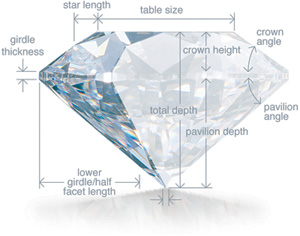
Grading the cut is also complicated due to the precise and complex technical analysis that must be undertaken to count the many facets of a cut diamond and their proportions.
As promised, our next show-and-tell prop, Lot 42, is a pendant brilliant diamond of 5.08 carats. The cut grading on this diamond’s certificate is as follows: Polish: Very Good, Symmetry: Good, Proportions: Very Good.
3. Clarity
Diamond clarity refers to the absence of “inclusions” or blemishes in the diamond. Due to the process in which diamonds are formed (they are essentially carbon exposed to huge amounts of heat and pressure deep in the earth, c.f. Henry Kissinger: “A diamond is a chunk of coal that is made good under pressure.”), inclusions (internal) and blemishes (external) occur in diamonds. Therefore the fewer inclusions or blemishes, the more beautiful, and more valuable the diamond. Below is a grading scale used for measuring the clarity of diamonds.
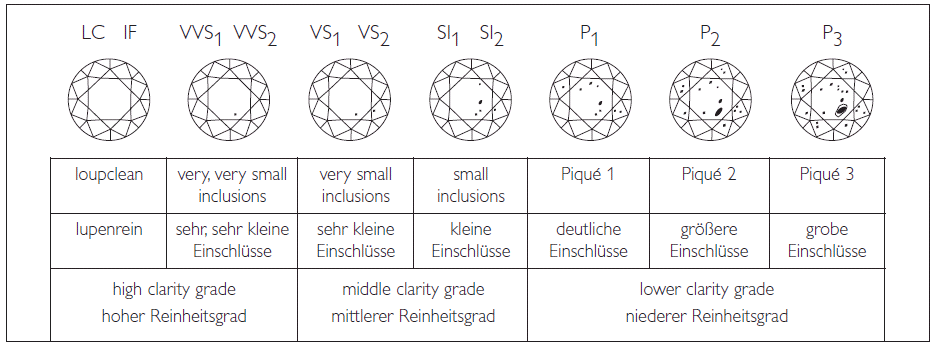
Our penultimate example is sure to be a highlight of our jewellery auction: Lot 72. This beautiful Cartier oval brilliant diamond ring weighs 3,01 carats and has the impressive clarity grade of IF – “Internally Flawless.” As if that’s not enough to tempt diamond lovers, the main diamond has a Colour Grade E, a “Very Good” polish and “Good” Symmetry. Behold the (literal) jewel in the Dorotheum Jewellery Auction’s crown:
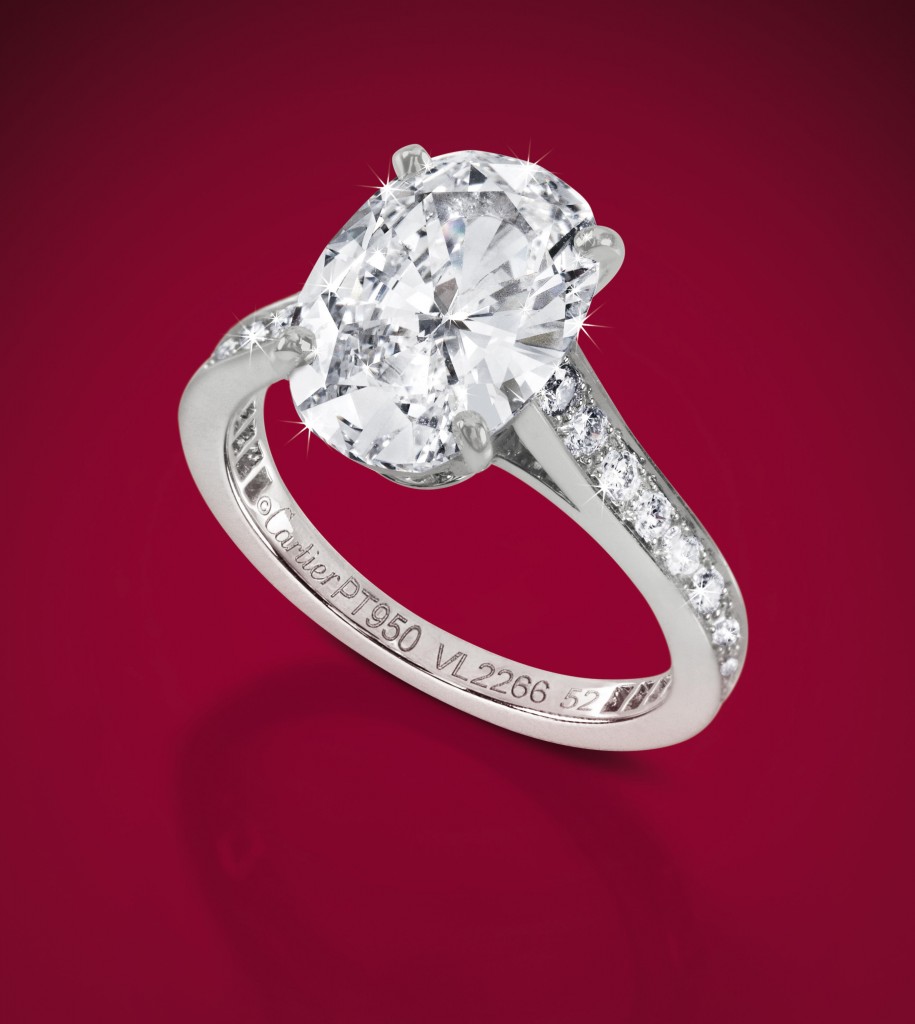
4. Colour
Our final C is slightly paradoxical in the sense that diamonds are in fact valued for their lack of colour. A chemically pure and structurally perfect diamond has no colour and so the less the hue, the more valuable the diamond. While various natural chemical circumstances can lead to yellow, blue, red, pink, or green diamonds (which are very valuable and rare), most common are white diamonds, which are graded from (D) colourless to (Z) light yellow. Below is a diagram for grading the colour of white diamonds.

It takes a seasoned expert to accurately measure the subtle differences in colour from one diamond to another. To demonstrate our final C, we shake things up with a diamond bracelet: Lot 45. This bracelet weighs 22,83 carats in total and is set in platinum 900. The diamonds are of a brilliant emerald cut, the clarity is graded VVSI-SI and the colour has been graded in the areas J-M.
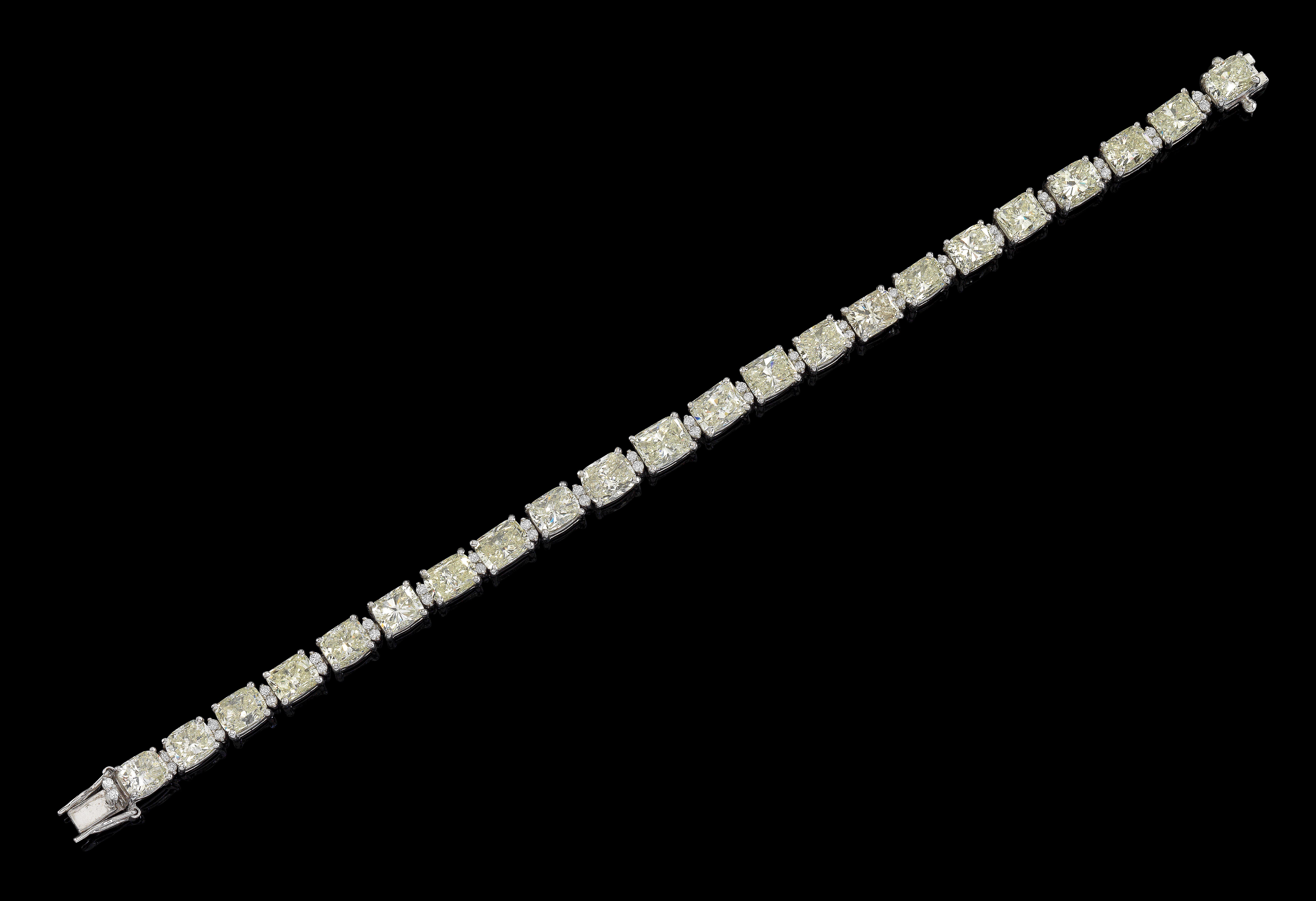
If our quick guide to the 4 C’s of diamond assessment leaves you yearning to behold more beautiful sparkly things, the catalogue for Dorotheum’s Jewellery Auction can be found here.
The auction will take place at the Palais Dorotheum in Vienna on Thursday 21st April 2016, starting at 2pm.

